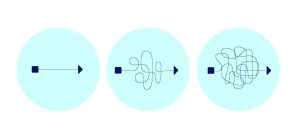How ‘messy’ is your problem?

“The only problems that have simple solutions are simple problems. The only managers that have simple problems have simple minds. […] Complex, messy problems do not have simple solutions.” ― Russell Ackoff
In the pursuit of efficiency, productivity and profitability, business leaders must orchestrate various teams, technologies and perspectives, collectively as one system. These systems are often viewed through a reductionist lens, making it difficult to optimise efficiency and resolve complex problems.
Not all problems are created equally. Most people, when attempting to solve a problem, fall into the conventional traps of linear and dogmatic thinking, applying ‘solution’ rather than ‘intervention’ to their problem. The reality is most problems business leaders face contains an entanglement of problems, which become difficult to identify and target.
When faced with this level of complexity, systems thinking provides a methodology that can be used as a diagnostic tool to pick apart a problem, to understand it, and to solve it.
Case Study:
Process Innovation at Dupont
Problem:
In 1991, a benchmarking study showed Dupont spent more on maintenance than any of its competitors, yet plant uptime was lower, and its mechanics worked more overtime.
Understanding:
Systems thinking showed that the overspend on reactive maintenance had translated into a culture that pressured staff to deliver savings and increased uptime, at the cost of increased defects. Overworked maintenance staff and an incentive to use low-cost parts would often result in an increase in future defects.
The data showed that Dupont can maximise the plant profit via a full suite of proactive maintenance policies, with a year of profit reduction.
Solution:
Systems Thinking tools ensured that a critical mass of stakeholders across Dupont were engaged to enable the change.
In plants that implemented the program by the end of 1993, the mean time between mechanical failure for pumps rose by an average of 12% and maintenance costs fell by an average of 20%.
Methodology:
Sub-Methodology Applied: Systems Dynamics
Definition: System Dynamics is an approach to understanding the nonlinear behaviour of complex systems over time, using stocks, flows, internal feedback loops, table functions and time delays.
If you want to learn more about how Systems Thinking works, and how CBO can use it to help you solve complex problems within your organisation, follow consultant Jason Gibbs as he shares a series of articles taking you step by step through the background, methodology and application.


